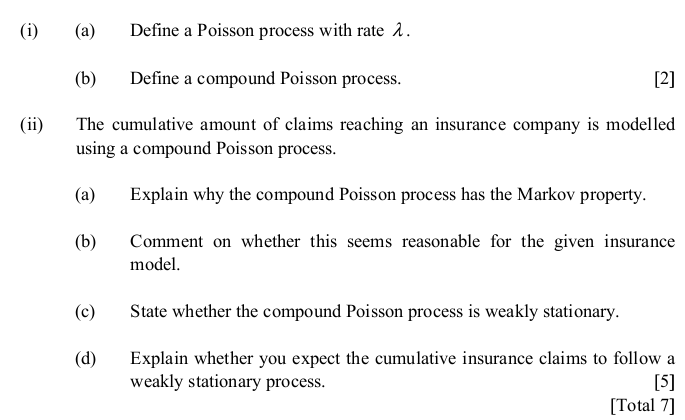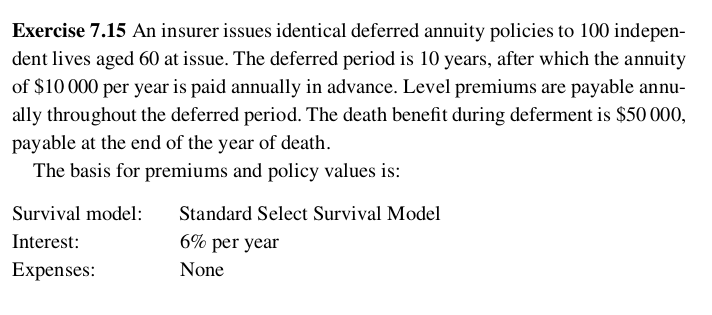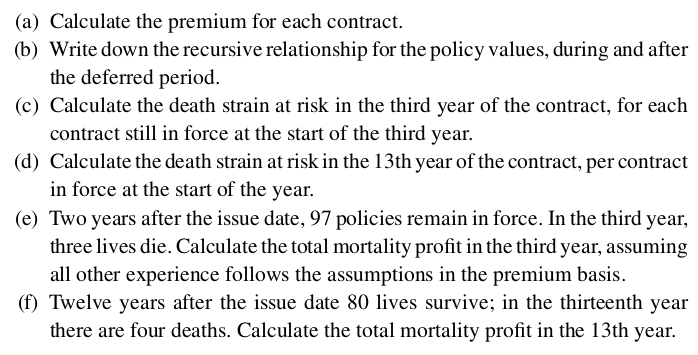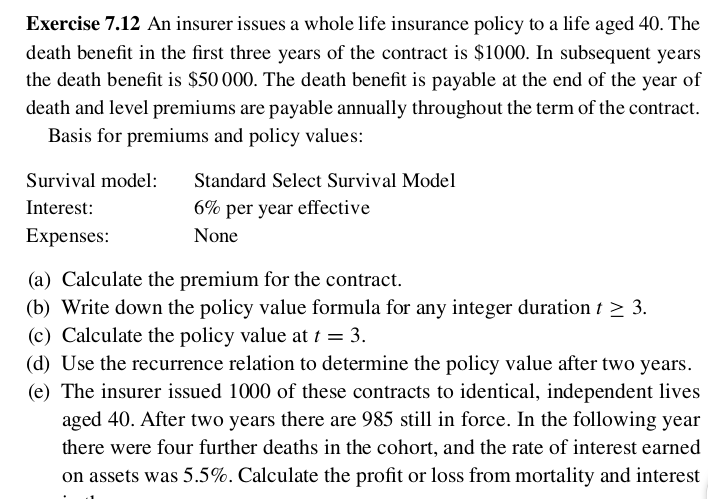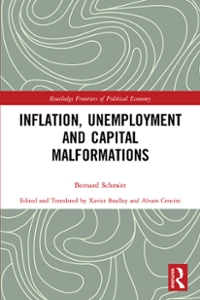Answer the questions below
(i) (a) Define a Poisson process with rate 1. (b) Define a compound Poisson process. [2] (ii) The cumulative amount of claims reaching an insurance company is modelled using a compound Poisson process. (a) Explain why the compound Poisson process has the Markov property. (b) Comment on whether this seems reasonable for the given insurance model. (c) State whether the compound Poisson process is weakly stationary. (d) Explain whether you expect the cumulative insurance claims to follow a weakly stationary process. [5] [Total 7]Exercise 7.15 An insurer issues identical deferred annuity policies to 100 indepen- dent lives aged 60 at issue. The deferred period is 10 years, after which the annuity of $10 000 per year is paid annually in advance. Level premiums are payable annu- ally throughout the deferred period. The death benet during deferment is $50 000, pay able at the end of the year of death. The basis for premiums and policy values is: Survival model: Standard Select Survival Model Interest: 6% per year Expenses: None (a) Calculate the premium for each contract. (b) Write down the recursive relationship for the policy values, during and after the deferred period. (c) Calculate the death strain at risk in the third year of the contract, for each contract still in force at the start of the third year. (d) Calculate the death strain at risk in the 1 3th year of the contract, per contract in force at the start of the year. (c) Two years after the issue date, 97 policies remain in force. In the third year, three lives die. Calculate the total mortality prot in the third year, assuming all other experience follows the assumptions in the premium basis. (f) Twelve years after the issue date 30 lives survive; in the thirteenth year there are four deaths. Calculate the total mortality prot in the 13th year. Exercise 7.12 An insurer issues a whole life insurance policy to a life aged 40. The death benefit in the first three years of the contract is $1000. In subsequent years the death benefit is $50 000. The death benefit is payable at the end of the year of death and level premiums are payable annually throughout the term of the contract. Basis for premiums and policy values: Survival model: Standard Select Survival Model Interest: 6% per year effective Expenses: None (a) Calculate the premium for the contract. (b) Write down the policy value formula for any integer duration t 2 3. (c) Calculate the policy value at t = 3. (d) Use the recurrence relation to determine the policy value after two years. (e) The insurer issued 1000 of these contracts to identical, independent lives aged 40. After two years there are 985 still in force. In the following year there were four further deaths in the cohort, and the rate of interest earned on assets was 5.5%. Calculate the profit or loss from mortality and interest
